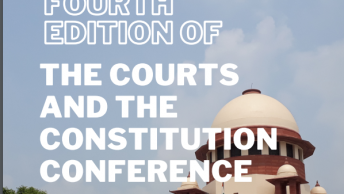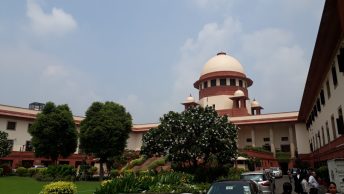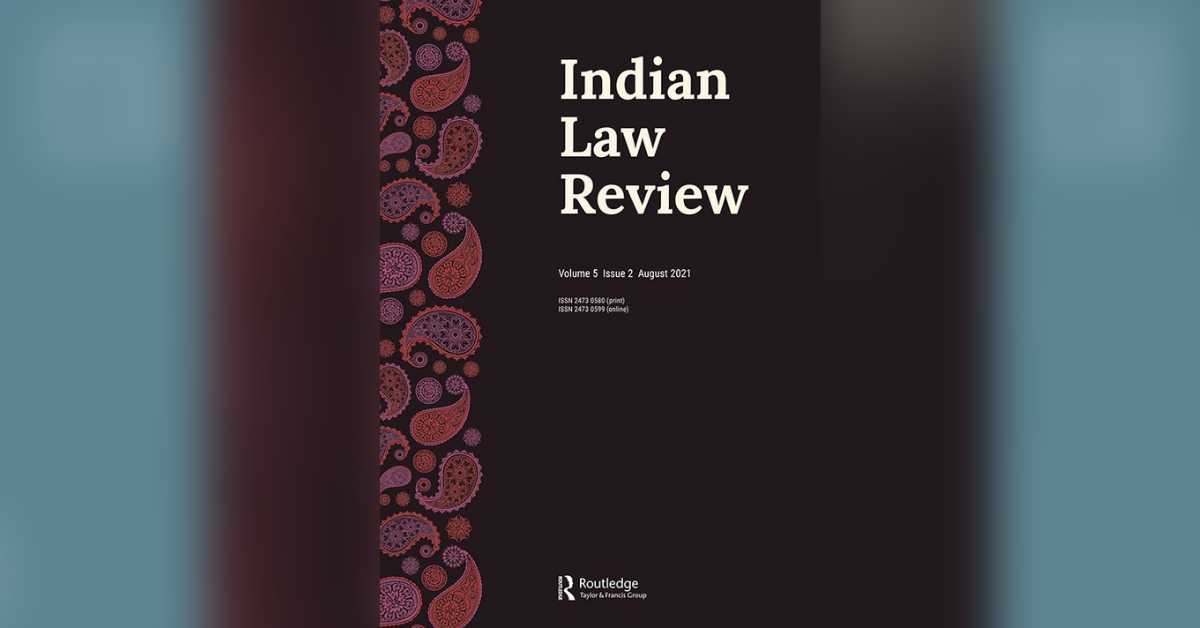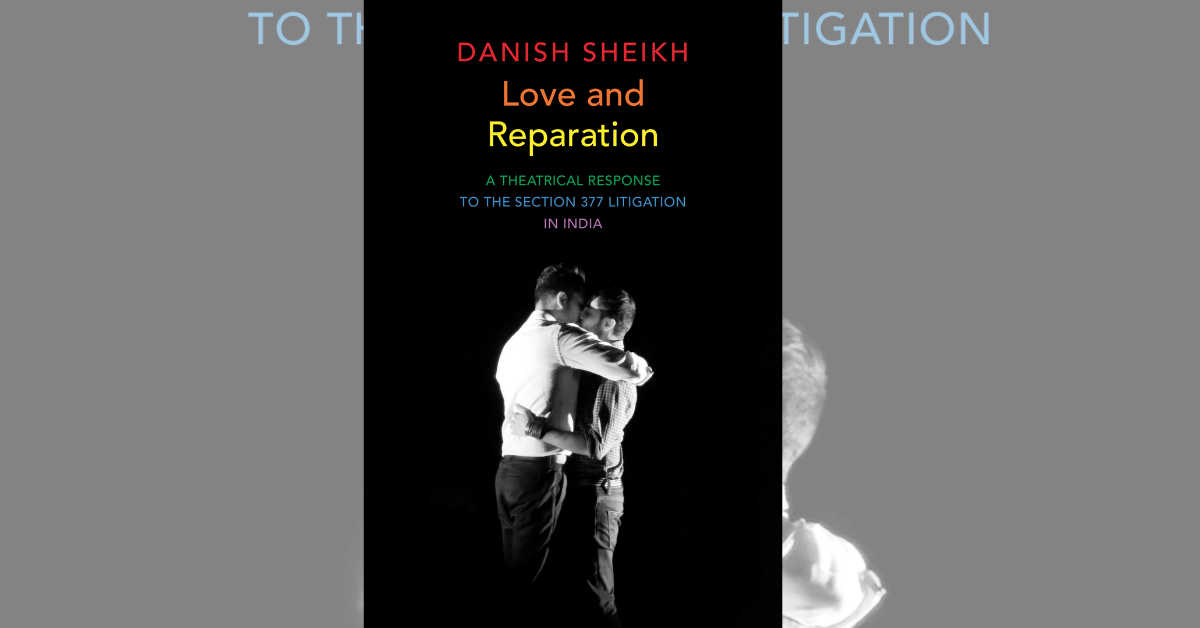In early August, Law and Other Things turned fifteen. To mark that milestone, the editors have invited past and present contributors to share their reflections. This piece is the first in that series. In it, we look at this blog’s evolution, track record, and future directions.
There were no grand ambitions to LAOT’s creation in 2005. It began as an online experiment among a few friends before the advent of social media. Using Blogger, they began sharing posts, links, and articles about Indian constitutional and legal developments. In the United States, a rising number of legal scholars were using blogs to reach a wide and diverse online audience. The Volokh Conspiracy, SCOTUSBlog, and Prawfsblawg featured real-time commentary on land-mark cases and other developments. LAOT’s creators had similar ambitions for India where blogging was growing in popularity. We wanted an open space where we could share ideas, criticism, and analysis about constitutional law unconstrained by the hopelessly delayed and strait-jacketed law journal review process.
When LAOT first registered its URL, Indian bloggers largely focussed on information technology or travel. There was, however, one-notable exception: Amit Varma’s eclectically curated India Uncut. LAOT’s founders drew on Varma’s pioneering blog for ideas, formatting, and content. The blog’s name was inspired by the title of M.C. Setalvad’s autobiography: My Life: Law and Other Things. This eccentric title may have been chosen somewhat unheedingly. But its juxtaposition of “law” with “other things” reminds us that blackletter legal answers or analysis are not the last word on constitutional or political questions.
The blog’s early posts largely reflected its founding contributors’ interests and obsessions with a broad focus on public law. Elaborating upon the portal’s title, the revised masthead declared: “a blog about India’s constitution, courts, and the legal system.” Eager to expand the blog’s content and readership, its founding contributors invited friends and colleagues to join them in this endeavour. Many did so. Some became regular contributors, while others lent their names and experience to an evolving collective. Some even went on to establish specialized blogs. Shamnad Basheer created SpicyIP (2005) devoted to intellectual property and V. Umakanth began the much-cited IndiaCorpLaw (2007).
Our friend, V. Venkatesan joined us in early 2007. A respected legal journalist with a credible track record, Venkat has been the blog’s most prolific contributor. He also pioneered real-time legal reporting by blogging from his ring-side view at the Supreme Court. He paved the way for today’s Twitter live and minute-to-minute updates of legal proceedings. Venkatesan was also a frontrunner in this space by summarizing oral arguments and providing links to pleadings and proceedings in important cases.
LAOT’s contributing members were primarily law professors, lawyers, and law students. We also had social scientists, like Pratiksha Baxi and Chandan Gowda, and the eminent legal historian, Rohit De, whose posts have greatly enriched the blog’s fare. Other long-time contributors have been Abhinav Chandrachud, Namita Wahi, Nicholas Robinson, Tarunabh Khaitan, and Madhav Khosla, who were later joined by Anup Surendranath and Aparna Chandra as well as Douglas McDonald, B.N. Harish, Vasujith Ram, Vivek Reddy, and Vinay Sitapati. All of them and many others have taken out innumerable hours to write for the Blog over the years and have helped expand blog’s readership and reach. In time, we resolved that new members would be expected to contribute at least three posts before becoming permanent contributors to the blog.
Besides influencing opinion and debate, LAOT’s posts have provided valuable feedback to those involved in constitutional adjudication, whether at the bar or on the bench. In his concurring opinion in Common Cause v. Union of India, Justice D.Y. Chandrachud cited Aparna Chandra and Mrinal Satish’s post on the Shanbaug judgment. The blog has also been cited by multiple commentaries, books, and journal articles including The Oxford Handbook of the Indian Constitution.
The blog also became a reference source for editors and scholars outside the legal community. Srinivasan Ramani, a leading newspaper editor, recently told us that he and other editors at the Economic and Political Weekly frequently consulted LAOT for editorial and contemporary insights on legal and constitutional questions. And in recognition of the blog’s trending presence online, the Library of Congress sought and obtained our approval to archive our pages.
As the blog’s reputation grew, it began receiving a large number of guest submissions. To objectively process these submissions, we created an editorial board comprising the blog’s most active members. The board reviewed each submission for quality and analytical rigour. In most cases, the board offered substantive or editorial feedback to guest authors, a number of whom were law students or emerging scholars. Many of these are now seasoned practicing lawyers and established legal scholars. The board was also adamant about preserving the blog’s cooperative and non-commercial structure. Consequently, we turned down a number of advertising solicitations and revenue-generating offers. Accepting these proposals would have altered the blog’s DNA as a voluntary collective.
Even the best-organized collaboratives or voluntary ventures can run out of steam. A blog is especially vulnerable to its contributors’ changing personal and professional commitments. In this respect, LAOT was no exception. Overtime, a number of LAOT’s primary contributors grew busier at their day jobs. Personal and professional commitments evolved, leaving little or no time to blog. All this led to a precipitous drop in the blog’s output. This decline coincided with the emergence of commercially-run platforms like Bar & Bench (2009) & Live Law (2013) and newer portals like Indian Constitutional Law and Philosophy. Our readership now had so many options to choose from.
At this point, we strongly considered closing shop and closing the blog. But many long-time readers and well-wishers discouraged us from doing so. One of them, a leading historian contacted an endowment fund which offered us a generous grant proposal. The offer was tempting. Yet, after some internal deliberations, we concluded that we lacked the bandwidth to accept the grant. But maintaining the status quo simply was not an option.
Shortly thereafter, we reached out to the NALSAR University of Law to explore further options. Sidharth Chauhan, a dynamic NALSAR professor, was a pillar of strength. Thanks to Chauhan’s proactive involvement, the university agreed to let its students participate in the blog’s administration. Adopting a transparent and competitive selection process, the editorial board and a NALSAR faculty nominee chose the first student editorial committee in 2017. With varied representation from different years of NALSAR’s undergraduate B.A.LL.B.(Hons.) course, the student editorial team led by Lovish Garg and Parika Kamra hit the ground running. Lovish and Parika’s successors as student chief editors were Priyamvadha Shivaji and Aishwarya Birla, who were, in turn, followed by Vishal Rakhecha and Dayaar Singla. Working closely with the “senior” editors, the student committee gradually took over the blog’s administration, maintenance, and editorial process.
Besides managing and maintaining the blog on a daily basis, the student committee is now primarily responsible for approving and editing submissions. At the same time, the student board works closely with senior editors on all decisions. Senior editors also continue to provide editorial guidance or subject-matter feedback on all blog submissions before they are published. While a few of the original contributors remain active, the editorial board was recently expanded to include Chinmayi Arun, Malavika Prasad, Mohsin Bhat, and Raeesa Vakil whose expertise and experience we are lucky to have.
LAOT’s hybrid editorial model has already brought new dynamism and energy to the blog while maintaining continuity and quality control. This is reflected in a number of initiatives taken by the student committee to revive, rebuild, and rebrand the blog with the editorial board’s guidance. These initiatives include an enhanced social media presence on Twitter, Facebook, LinkedIn, Instagram; fortnightly newsletters; and a dedicated section for new scholarship.
Through our new scholarship section we have been trying to build a resource which brings to our readers recently published scholarship in the area of public law as well as some very exciting debates on some of these publications. This section reflects an important priority for the blog’s editors (both senior and students). In a recent interview with the student committee, Tarunabh highlighted the role that blogs serve as an exchange forum for ideas or “thought balloons”. For junior scholars — as well as more experienced ones — blog posts can be a resource for valuable feedback and reader suggestions that could enrich a piece before it is published either as a book or article elsewhere.
Over the decade-and-a-half of its existence, a principal objective of LAOT has been to examine, critique, and analyse the Supreme Court and the High Courts’ decisions. Reflecting that objective, two years ago we began the annual The Courts and the Constitution- Year in Review’ Conference at NALSAR’s campus in Hyderabad. This conference brings together voices from the bench, bar, academia and journalism to deliberate on the cases and other institutional developments concerning the judiciary that impact India’s democratic governance and the lives of ordinary citizens. Planning is underway for a third conference in this series to be held early next year to review 2020’s developments.
Looking ahead, we hope to preserve the blog’s pioneering role in promoting and popularizing constitutional conversations even as we constantly look for ways to improve and adapt to our readers’ evolving interests and preferences. We have also begun exploring ways to ensure that the blog’s technology backbone, operating systems and access policies comply with international best practices on information security and data protection.
Above all, we welcome your ideas and suggestions on how we can reimagine, reboot, and rebuild how we operate while strengthening our trademark independence, collective ethic, and commitment to diversity and inclusion. The blog has had a rich, eventful and interesting journey so far – we look forward to its future in its new, ramped avatar.
[Sign-up here to receive our fortnightly Blog Update and follow the 15 Year Series!]








Your article helped me a lot, is there any more related content? Thanks!
Thank you for your sharing. I am worried that I lack creative ideas. It is your article that makes me full of hope. Thank you. But, I have a question, can you help me? https://www.binance.com/en-IN/register?ref=UM6SMJM3